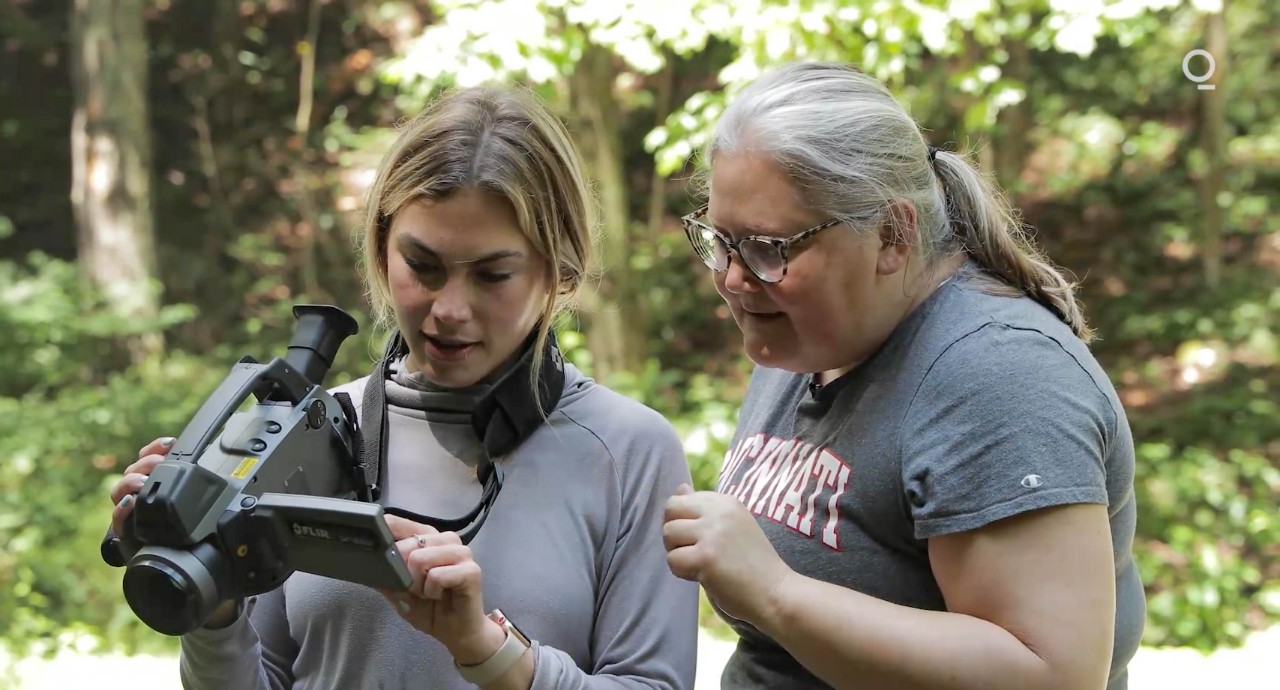
NPR's 1A: UC expert explains risk of leaky gas wells
UC research warns of environmental impact of uncapped wells
University of Cincinnati associate professor of environmental science Amy Townsend-Small talked to NPR's 1A on Tuesday about a multimedia report in Bloomberg this month that examined the environmental risks posed by thousands of uncapped natural gas wells across the country.
For "An Empire of Dying Wells," Bloomberg News turned to Townsend-Small to understand just how much methane was leaking from abandoned or idled natural gas wells across Ohio, Pennsylvania and West Virginia.
Townsend-Small has studied methane leaks from oil and gas wells across the United States. Her latest study published in the journal Environmental Research Letters estimated that uncapped, idle wells in the Permian Basin of Texas could be leaking millions of kilograms of methane into the atmosphere and surface water each year.
Methane is a major contributor to the greenhouse gas effect that is largely responsible for climate change. And Bloomberg's report explained how even small leaks can have big consequences.
"Today, in the United States most of these conventional wells are either abandoned and not producing anything at all or they're marginally producing — less than 15 barrels per day. But they're the most abundant type of oil and gas well in the United States by far," Townsend-Small told 1A host Jenn White.
Bloomberg reporters Zachary R. Mider and Rachel Adams-Heard visited three states to see if recently purchased natural gas wells, some idle for decades, were leaking methane into the air. Using special cameras and methane-detection equipment, the reporters indeed found numerous examples of leaks.
But to find out just how much methane was leaking from the wells, they turned to Townsend-Small, a researcher who holds joint appointments in geology and geography in UC's College of Arts and Sciences. Using a Hi-Flow Sampler, Townsend-Small measured methane escaping from three leaking natural gas wells the reporters previously visited in West Virginia.
There she found methane emissions of 38, 50 and 91 grams per hour, which would be the equivalent over a year of releasing 134 tons of carbon dioxide into the atmosphere, Bloomberg found.
Townsend-Small co-authored a 2020 study that examined oil and gas wells in Ohio that found leaks represented as much as 21% of their gas production.
"Some marginal wells are emitting more natural gas than they produce," she told Bloomberg.
Featured image at top: Bloomberg News reporter Rachel Adams-Heard and UC associate professor Amy Townsend-Small examine video of a natural gas leak captured by an infrared camera. Photo/Bloomberg News.

UC associate professor Amy Townsend-Small explained the environmental cost of leaky gas wells to Bloomberg News for its report "Empire of Dying Wells." Photo/Bloomberg News
Related Stories
Ohio takes steps to stop spread of invasive pear trees
March 21, 2025
WLWT talks to UC biology Professor Theresa Culley about Ohio's ban on the sale or planting of nonnative and invasive pear trees. The trees are showing up in many parks and wild areas where they are crowding out native species.
UC’s renovated Old Chem will feature bird-safe glass
March 21, 2025
Renovations to a building at the University of Cincinnati feature windows designed to prevent the needless deaths of migratory birds.
Machine learning aids in detection of 'brain tsunamis'
March 21, 2025
MSN highlighted research led by the University of Cincinnati's Jed Hartings detailing how automation and machine learning can aid clinicians treating patients with spreading depolarizations, sometimes referred to as “brain tsunamis.”
